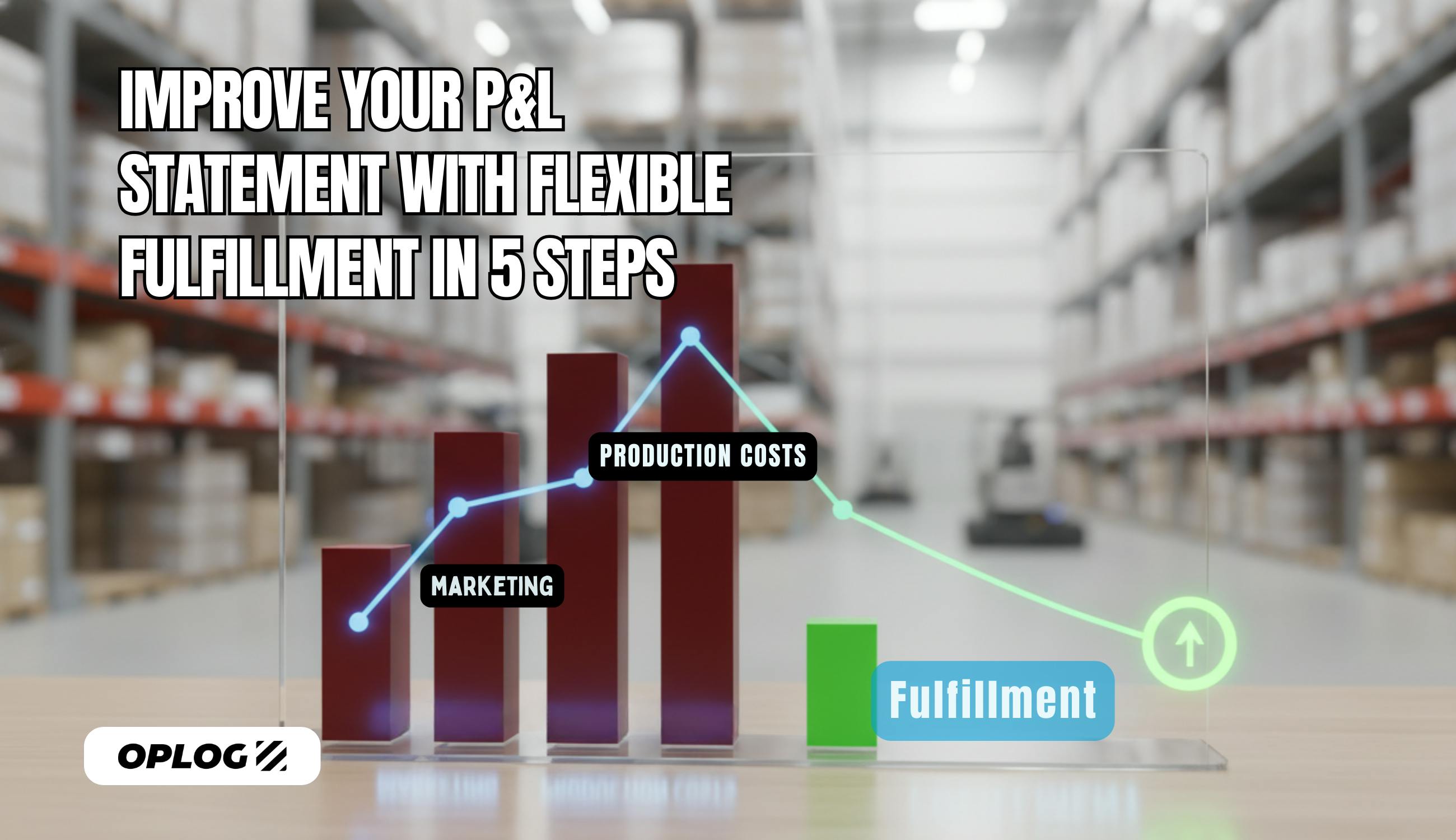Let’s dive into the dynamic world of stock consignment, presented as an insider's guide for visionary leaders in mid to large enterprises. Imagine your products in the care of retailers or vendors, yet ownership remains yours until purchase. This isn't just a clever tactic; it's a transformative strategy gaining traction across sectors, benefiting vendors, retailers, customers, and fulfillment providers alike.
Stay tuned as we dive deeper into how blending stock consignment with your fulfillment strategy can accelarete your operational efficiency, responsiveness to market swings, and financial game plan. It's about making your supply chain and inventory management practices not just smarter, but also more adaptable to the ever-changing business landscape.
Ready to transform how you think about inventory and fulfillment? Let's begin.
Exploring Stock Consignment
Consider the scenario where your products are allocated to retail or online spaces, positioned for discovery by the ideal customer. In this model, ownership remains with you until a sale is finalized. This strategy empowers the retailer, referred to here as the consignee, to display and sell your offerings without the initial purchase, significantly reducing their risk and initial expenses. It's akin to optimizing inventory management to benefit both parties.
Stock consignment represents a mutually beneficial arrangement. As the supplier, you retain control over your products until they are successfully sold. Your partners, in turn, have the opportunity to diversify their inventory with your products, bypassing the hefty investments usually associated with stock acquisition.
Let's dive into the consignment stock strategy, where the stakes are high but so are the rewards. Here's what the forward-thinking leaders need to know:
Vendors (Consignors):
Example: A leading electronics manufacturer places its latest devices in high-end retail stores under consignment.
Pros:
- Expanded Market Presence: Consigning products to high-traffic retailers enhances brand visibility and broadens customer reach.
- Risk Mitigation: Consignment reduces the financial burden of inventory management, especially for high-value items, mitigating the risk of excess production and unsold stock.
Cons:
- Cash Flow Challenges: The payment terms typical in enterprise-level consignments can delay revenue, impacting cash flow.
- Quality Control Concerns: Maintaining product quality and upholding brand reputation can become complex when the control over sales is transferred to another party.
Retailers (Consignees):
Example: A nationwide department store accepts consigned luxury goods to attract a specific customer demographic without the need to invest heavily in inventory.
Pros:
- Inventory Flexibility: The retailer can offer a wide range of high-value products without upfront investment, adjusting the product mix according to consumer demand.
- Enhanced Customer Attraction: Hosting exclusive or high-demand products on consignment can draw in customers, boosting sales of non-consignment items.
Cons:
- Complex Logistics: Managing consignment inventory requires sophisticated tracking systems to ensure accurate sales attribution and payments to vendors.
- Space and Resource Allocation: Retailers must balance the allocation of floor space and marketing between consigned products and those purchased outright, which may offer higher margins.
Customers:
At the enterprise level, customers benefit from the availability of a wide range of products, potentially at competitive prices due to the efficiency and scale of operations among vendors, retailers, and fulfillment providers. However, the disadvantages include potential inconsistencies in product availability and support, as the direct relationship with the manufacturer is sometimes less pronounced.
Key Considerations When Integrating Stock Consignment:
Nailing the Consignment Game
Venturing into stock consignment? Great choice. Let's ensure it's a seamless journey. Collaborating with a fulfillment partner means strategizing wisely to guarantee a win-win for all—consignors, consignees, and indeed, us, your strategic fulfillment allies. Below are insights to optimize consignment in your favor, ensuring clarity, adaptability, and perfect alignment with your business growth.
The Art of the Deal: Mastering Consignment Terms
- Clarity is Paramount: Detail every aspect—payment processes, profit shares, and accountability for mishaps (lost or damaged items, for instance). Discuss timelines thoroughly. Transparency from the outset prevents complications later.
- Flexibility for Growth: Your business isn't static, and neither should your consignment terms be. Markets shift. Your business scales. With fluctuating markets and business expansion, your agreement must accommodate changes in inventory levels, consignment durations, and product selections. Embrace adaptability.
- Strategic Returns: What's the plan if items linger on shelves? Establish clear guidelines for returns of unsold goods. This approach keeps your inventory current and minimizes warehousing expenses.
Implementing Tracking and Reporting Systems
- Advanced Inventory Management: Embrace an inventory management system that sets the pace, not just keeps up. This system goes beyond the basics, seamlessly differentiating consigned goods from your standard inventory. It ensures that every transaction, from sales to returns, is accurately captured with precision. Yes, in real-time.
- Unmatched Transparency: Transparency isn't just a best practice; it's our guiding principle. We provide all stakeholders with a transparent view of the inventory dynamics, promoting trust and facilitating agile adjustments to inventory and marketing strategies. This open approach keeps everyone aligned and informed.
- Precision Reporting: Timing is everything. Our reporting rhythm—meticulously planned in both frequency and format—ensures that both consignors and consignees are always in the loop. With detailed, timely reports, making informed decisions becomes second nature. Stay at the forefront of performance tracking and streamline your decision-making process.
Aligning Consignment with Your Fulfillment Strategy:
- Seamless Integration: Ensuring your consignment approach is perfectly aligned with your existing fulfillment operations is essential. This encompasses everything from secure storage to efficient distribution, aiming to streamline operations and enhance customer satisfaction.
- Financial Analysis: It's vital to balance the operational demands of managing consigned inventory against the benefits it offers. The goal is to seamlessly integrate consignment into your broader business objectives and profitability targets.
- Risk Management: Identifying potential pitfalls, such as excess inventory, sales downturns, or conflicts with your existing product lines, is critical. Develop strategic measures to ensure consignment complements your overall business model effectively.
- Collaborative Partnerships: View your fulfillment partners and suppliers as key team players. Maintain open communication for collaborative problem-solving and regular updates on consignment strategies, ensuring agility to adapt to market shifts and align with your business dynamics.
Conclusion:
In the world of enterprise, stock consignment stands out as a strategic masterstroke, paving the way for robust collaborations between manufacturers, retailers, and fulfillment experts. For manufacturers, it opens the floodgates to new markets without the burdens of inventory costs. Retailers, on the other hand, get to diversify their offerings, reducing risk while enhancing consumer appeal. When orchestrated with precision, consignment emerges as a savvy strategy, amplifying product diversity, mitigating financial risks, and fulfilling customer expectations across the enterprise landscape. It's a sophisticated blend of efficiency and innovation for the modern business ecosystem.
How OPLOG can help you?
Boost your stock consignment with OPLOG One platform. It's your go-to for smart inventory management, giving you full view and total control over your stock with 30+ integrations for spot-on accuracy. Strengthen your ties with vendors and retailers, and make sure your customers are always happy. With OPLOG, managing your inventory becomes straightforward, ensuring your stock levels are just right, every time.






